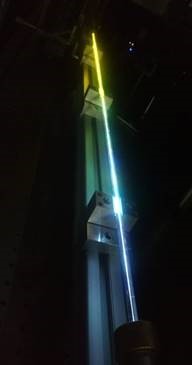 EPSRC have awarded £1.1m to Professor Steve Meech from the University of East Anglia (UEA), Dr Greg Greetham, an Ultra Laser Scientist at the Central Laser Facility, and Dr Garth Jones from UEA, to investigate coherence in condensed phase chemical reactions using two-dimensional electronic spectroscopy.
EPSRC have awarded £1.1m to Professor Steve Meech from the University of East Anglia (UEA), Dr Greg Greetham, an Ultra Laser Scientist at the Central Laser Facility, and Dr Garth Jones from UEA, to investigate coherence in condensed phase chemical reactions using two-dimensional electronic spectroscopy.
The project will bring people and equipment together across UEA and the CLF to explore coherence in chemistry, over 2½ years. The hub for this research will the CLF's ULTRA Facility.
The ULTRA team's aim is to develop the technology to study ultrafast details of reactions in chemistry. This will help us to improve understanding of, and potentially control photochemistry and photobiology, maximizing reactions' efficiency in yield, directing them to desired products. Understanding and controlling reactions in this way has many possible applications, including the potential for improving the efficiency of man-made solar energy.
Coherence is often used in laser science as a way to describe photons travelling and oscillating the same way. One can also consider coherence in molecular states (electronic and vibrational) and study how the relationship between different states can evolve over time. Being able to study the coherence between reactant and product states of a chemical reaction will reveal details of important pathways in chemistry. Understanding chemical reactions at this level provides the potential to apply very fine, efficient control over the direction of a chemical reaction.
The Laser in development will provide powerful, few-femtosecond, extremely broad spectrum pulses to study these processes, and seed future laser facility capabilities to support many research areas, such as efficient solar energy conversion and ultrafast reactivity. Similar laser sources have previously been used in the CLF's Artemis lab for generating extremely short bursts of XUV light. Here they will be applied to two-dimensional electronic spectroscopy, a technique using multiple short laser pulses with fine interferometric control of their timing.
“The broad spectrum allows us to start many states “singing" at the same time, while the short pulses allow us to see how the induced “songs" go in and out of phase, during a chemical reaction." Explained Dr Greg Greetham.
Learn more about the grant from the EPSRC website here.
Picture: Ultra-broadband laser generation from 1.75µm light in a hollow-core fibre, at the Artemis Facility.
